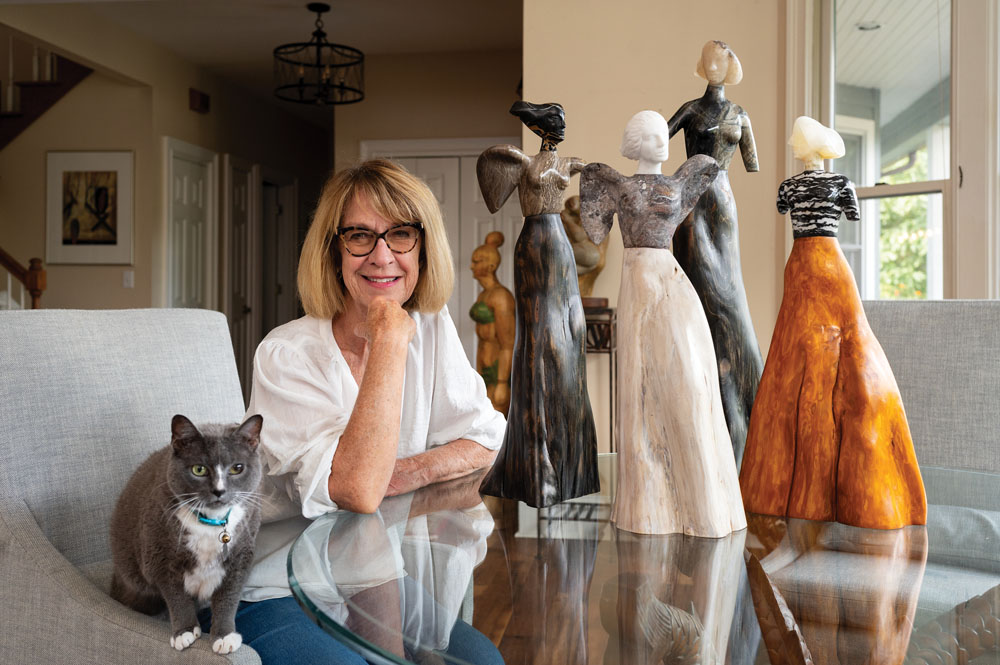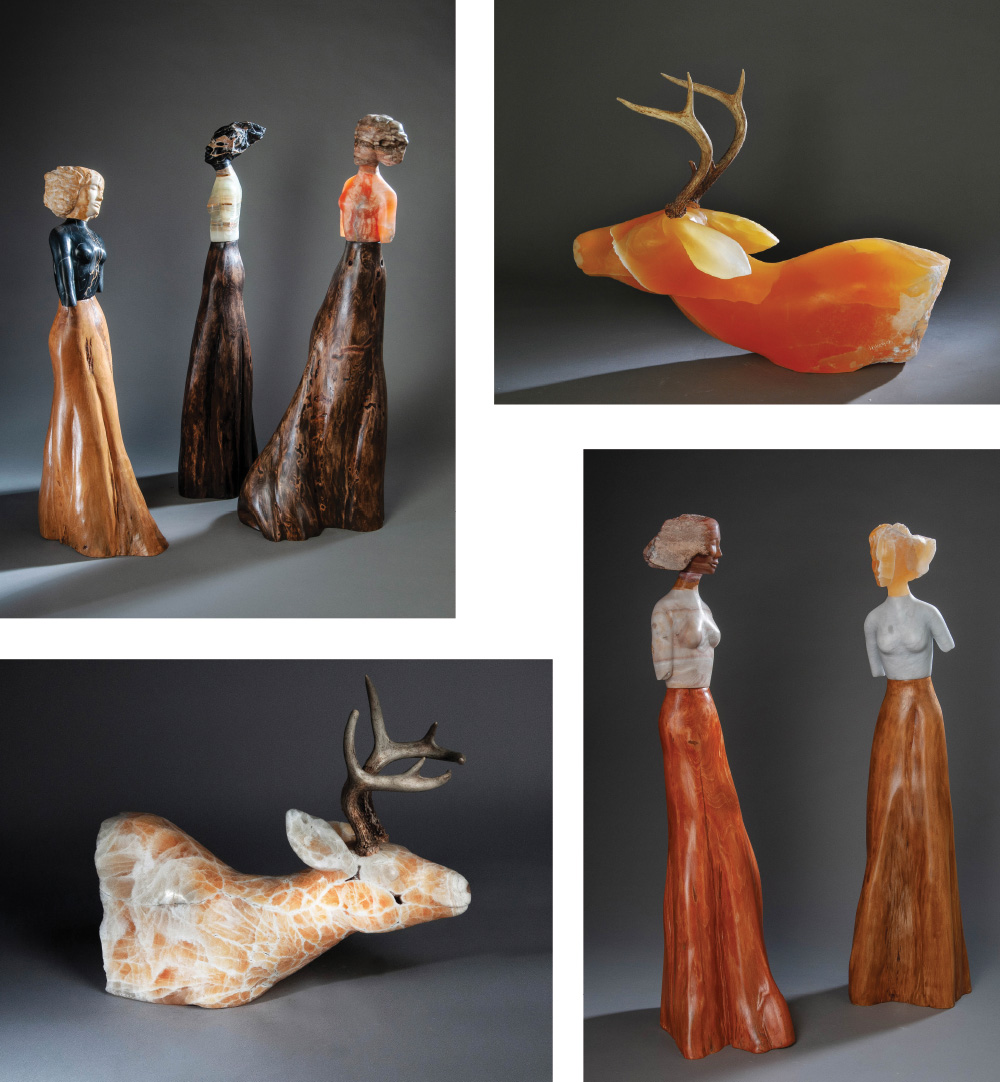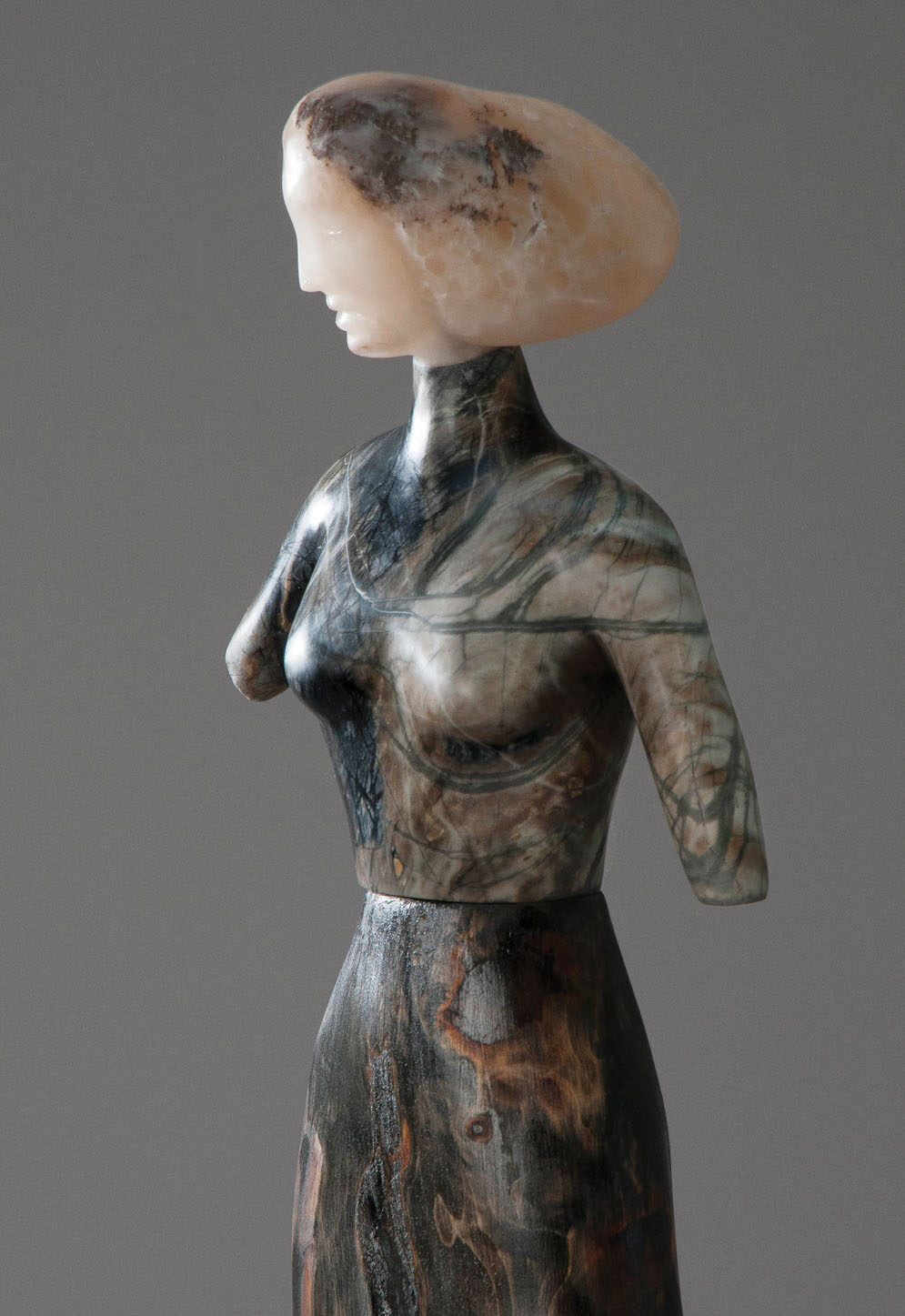
Sculptor Jane Jaskevich at home with Tinker. Portrait by Lauren Rutten
“I get an idea and start chiseling, as the stone suggests to me what it wants to be,” says Weaverville sculptor Jane Jaskevich. Her work is on permanent display at museums, banks, and college campuses nationwide, but her process begins in a decidedly more fanciful realm.
“Sometimes I’ll draw on the stone, but usually I just do it from my head,” she explains. She describes her process as “a discovery of the unconscious,” where “hands follow what your creative self dictates.” Her ideas for sculptures will usually be inspired by a chunk of stone or piece of wood that subtly suggests a human or animal form. “Then I let it evolve while I’m carving.” She believes that most sculptors see things three dimensionally — and says she tends to see negative space first. She’s also not afraid to bend rules in pursuit of curvature and gesture.

The women figures are made of various stone (travertine, Portoro marble, alabaster, fluorite, calcite, and anhydrite), all with cypress wood bases; the stags are made of calcite with real antlers.
“I was sculpting a deer, and a sculptor who knew all about anatomy and musculature told me, ‘You need to put a muscle right in there.’ But I didn’t do it, because I didn’t want to be hindered by that — I just wanted a suggestive shape.”
Jaskevich earned a BFA at the University of Georgia followed by an MFA at Florida State University. However, she excelled in art way before that. “I recall when my third-grade teacher phoned my mother and told her to stop doing my art projects for me. But I was actually doing them all by myself.” She has worked in bronze but typically favors marble, limestone, onyx, calcite, alabaster and cypress wood.

Her thematic evolution sounds as visionary as her process: “I started off sculpting animals, then women with animals, then women holding masks of animals. I carved the masks from stone for the women to hide behind. Then I did animals holding masks of women, and then women with works of art — images of a Miró and a Picasso — held in front of their faces.” She took both wood- and stone-sculpting classes in college, and was enamored with each medium, going back and forth from one to the other. Then she embarked on a series combining wood and stone, and discovered that they are organically and aesthetically compatible.
Although she taught sculpting for more than 20 years, Jaskevich now devotes herself 100 percent to creating. She works at least part of each day on her pieces, but has to strategically schedule the laborious process of sanding — a real-life challenge that brings the dream down to earth.
“Sanding smaller pieces is actually more difficult and tedious than sanding large ones, because it’s harder to reach the places that need sanding. It wears down my fingernails, so I need time to regrow them.”
Jane Jaskevich, Weaverville. The artist is represented in Western North Carolina by Art Cellar Gallery (920 Shawneehaw Ave. South, Hwy. 184, Banner Elk) and in other galleries and museums throughout the Southeast and in Lancaster, Pennsylvania. For more information, see jaskevich.com and on IG @jaskevich_sculptor.